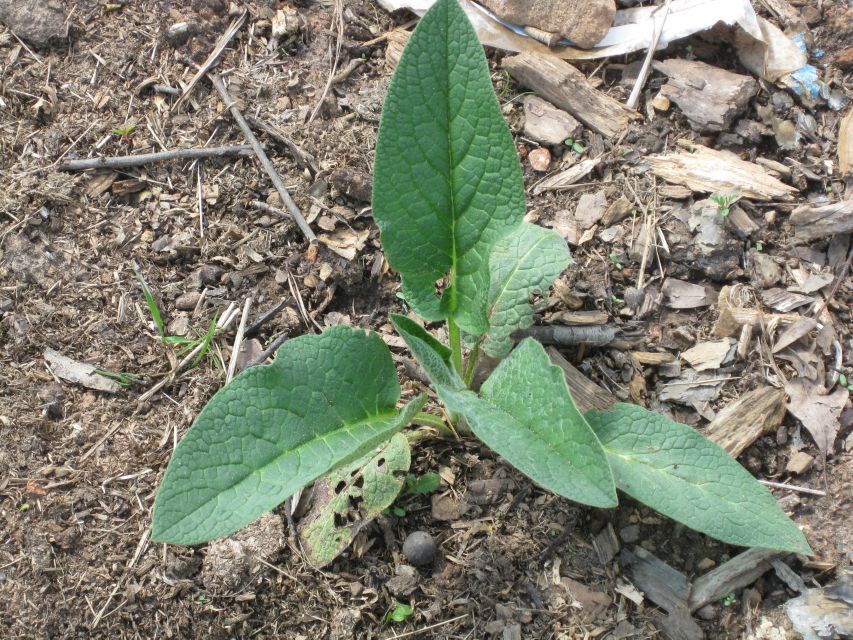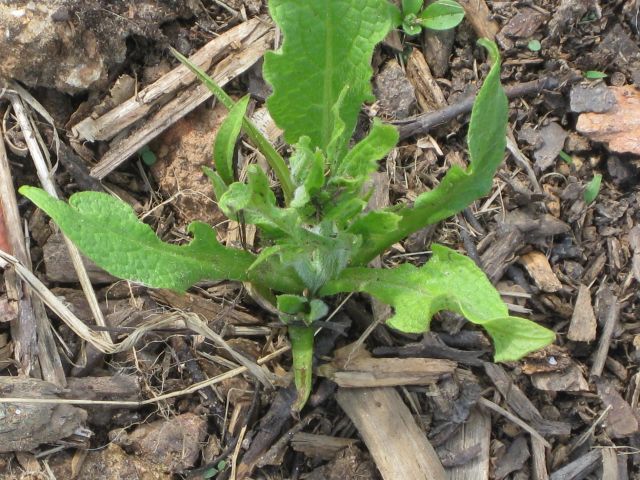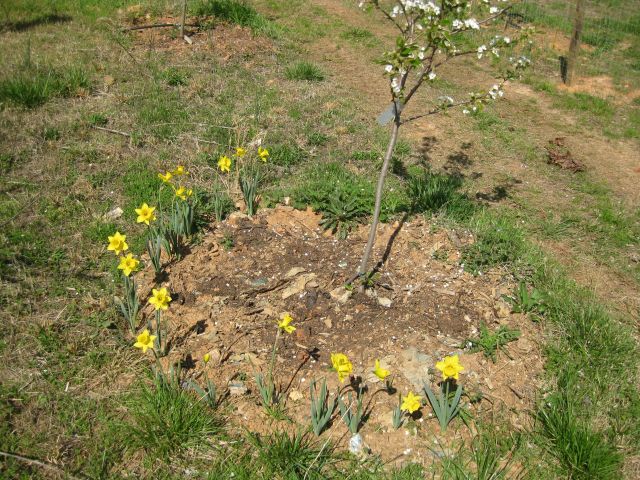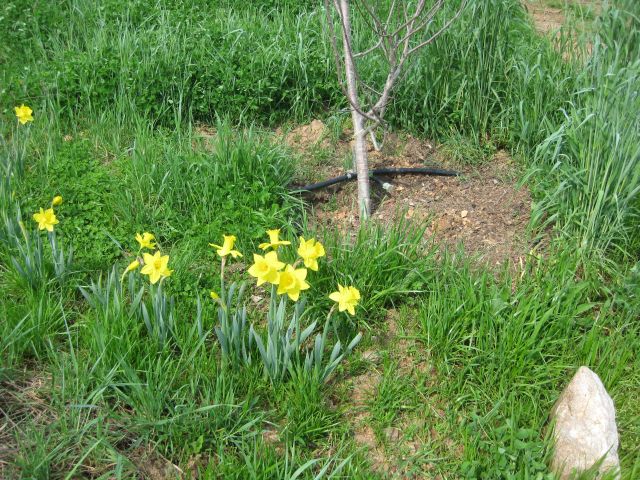I like the pragmatic and intellectual underpinnings of permaculture. On the intellectual side, I am reading and enjoying Holmgren’s “Principles and Pathways beyond Sustainability”, at the quasi pragmatic/theoretical level I enjoyed Hemenway’s and Whitecraft’s books on permaculture in the United States and the United Kingdom respectively, and for a hands on approach, of course the two books by Holzer. And some of the suggestions have rubbed off.
Polyculture and biodiversity are not new to organic growing. I purchased in the 80’s Riotte’s book “Carrots Love Tomatoes – Secrets of Companion Planting for Successful Gardening” which was first published in 1975. However, the focus on perennial plants and guild’s is new for me.
I have grown Mullein (several varieties), Black Locust and Osange Orange from seed and will be transplanting them soon. My efforts to grow Gumi from seed have not yet succeeded. The plant that fascinates me the most is comfrey. My father-in-law was a serious organic grower in South Africa and he grew comfrey in the 60’s and 70’s. But its controversial history goes much further back in time.
An interesting read, is “Russian Comfrey – A Hundred Tons an Acre of Stock Feed or Compost For Farm, Garden or Smallholding” by Lawrence D. Hills published in London in 1953, which can be freely downloaded. The book begins with a quote: “Russian Comfrey is a weed; no stock will eat it; its yield in dry matter per acre is below that of orthodox fodder crops; it is impossible to get rid of, and fit only for a half-hearted trial on an odd corner of land where nothing else will grow. Its possibilities have been greatly overrated by those who sell it at high prices, and nothing reliable is known about it…..”
The story of Russian Comfrey begins in 1771 when an English gardener living in Hackney, London sold his nursery and became head gardener to the Palace of St. Petersburg for Empress Catherine The Great, of Russia. Between 1790 and 1891 he sent back to England several varieties of comfrey of which S. asperrimum became more highly regarded than S. officinale, the native species to England. Over the past 200 years it has had staunch supporters and harsh critics.
Apparently all species of comfrey require a deep soil, not necessarily a good one, and they have a reputation for growing on land where nothing else will grow because they have long and powerful roots which dive straight down and access subsoil water and minerals. A hard pan will defeat them, they need at least four feet depth, a 6.0 ph is as low as they can go, and they are at their best on clays, loams and sandy loams. They are used to cold winters and are moderately shade tolerant. However, they are unsuitable for planting under fruit trees not only because of the size to which they grow but because they will compete with the tree for nitrogen and potash. Comfrey must be cut frequently (every 4 to 6 weeks) in summer and not allowed to go to flower.
The Russian Comfrey does not spread by seed but by its roots and to prevent it becoming an invasive the ground near it should not be tilled. Since I shall not be using it for fodder, it will be composted. My poultry shall be doing the weeding and providing nitrogen rich droppings.
I purchased several Russian Comfrey root cuttings in the fall and they have now surfaced and are growing vigorously.

I also installed one cutting of Comfrey officinale, which does spread by seed and must be carefully watched. It has just surfaced and begun growing.

I mentioned my interest in guilds, a frequent permaculture topic. One of Hemenway’s suggestions is to plant daffodils around a fruit tree. They flower early in the season so will not compete for water in the dry months, they are poisonous and may dissuade predators and, they look pretty.

Most of my pears are now in blossom. Last year I lost all my pears to a late frost. The average last frost day here is mid-April, so I am watching the weather reports and if frost is imminent I may try wrapping my pear trees to protect them. Below is an apple tree with daffodils and various cover crops which I shall cut down after they have seeded – I know I shall lose the benefit of the nitrogen nodules on the hairy vetch and clover but allowing them to seed gives me more for next year.

I am not including a photo of an apple tree with a nearby comfrey since, having now read the book on Russian Comfrey I realize I planted the comfrey too close to the tree and must relocate it – watching out of course that I do not leave any root remnants behind.
